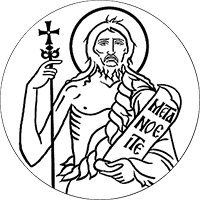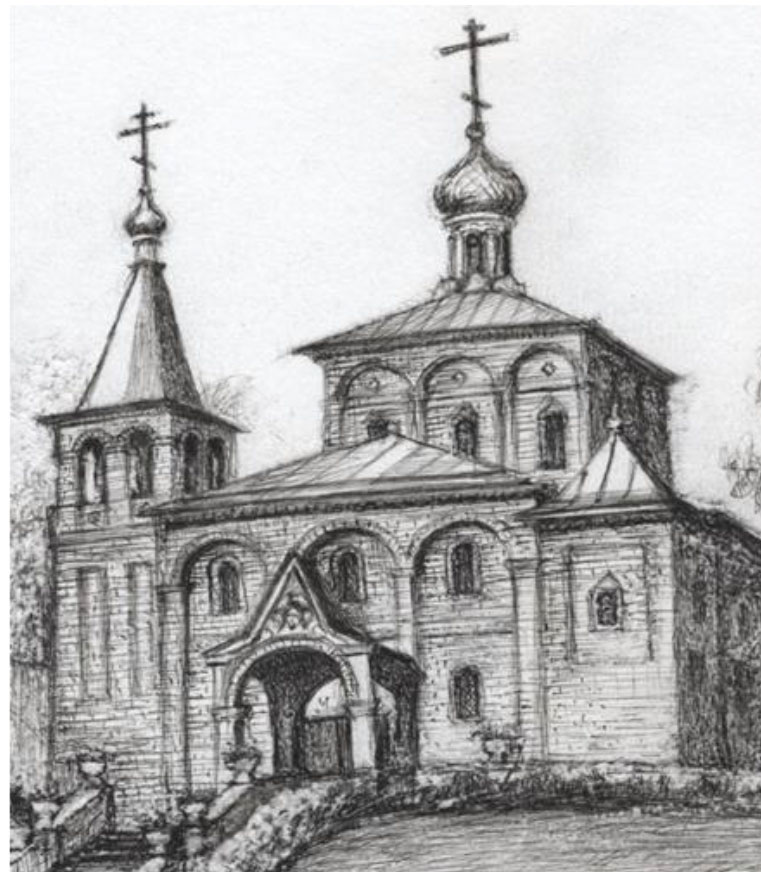You are here
HOLY WEEK

These three days, which the Church calls Great and Holy have within the liturgical development of the Holy Week a very definite purpose. They place all its celebrations in the perspective of End; they remind us of the eschatological meaning of Pascha. So often the Holy Week is considered one of the “beautiful traditions” or “customs,” a self-evident “part” of our calendar. We take it for granted and enjoy it as a cherished annual event which we have “observed” since childhood, we admire the beauty of its services, the pageantry of its rites and, last but not least, we like the fuss about the paschal table… And then, when all this is done we resume our normal life. But do we understand that when the world rejected its Savior, when “Jesus began to be sorrowful and very troubled… and His soul was exceedingly sorrowful even unto death,” when He died on the Cross, “normal life” came to its end and is no longer possible. For there were “normal” men who shouted “Crucify Him!” who spit at Him and nailed Him to the Cross. And they hated and killed Him precisely because He was troubling their normal life. It was indeed a perfectly “normal” world which preferred darkness and death to light and life… By the death of Jesus “normal” world, “normal” life were irrevocably condemned. Or rather they revealed their true and abnormal nature, their inability to receive the Light, the terrible power of evil in them. “Now is the judgement of this world” (John 12:31). The Pascha of Jesus signified its end to “this world” and it has been at its end since then. This end can last for hundreds of centuries, this does not alter the nature of time in which we live as the “last time.” “The form of this world is passing away…” (I Corinthians 7:31)
Pascha means passover, passage. The Feast of Passover was for the Jews the annual commemoration of their whole history as salvation, and of salvation as passage from the slavery of Egypt into freedom, from exile into the promised land. It was also the anticipation of the ultimate passage— into the Kingdom of God. And Christ was the fulfillment of Pascha. He performed the ultimate passage: from death into life, from this “old world” into the new world, into the new time of the Kingdom. And he opened the possibility of this passage to us. Living in “this world” we can already be “not of this world,” i.e., be free from slavery to death and sin, partakers of the “world to come.” But for this we must also perform our own passage, we must condemn the old Adam in us, we must put on Christ in the baptismal death and have our true life hidden in God with Christ, in the “world to come…”
And thus Easter is not an annual commemoration — solemn and beautiful — of a past event. It is this Event itself shown, given to us, as always efficient, always revealing our world, our time, our life as being at their End, and announcing the Beginning of the new life… And the function of the three first days of the Holy Week is precisely to challenge us with this ultimate meaning of Pascha and to prepare us to the understanding and acceptance of it.
This eschatological — and it means ultimate, decisive, final — challenge is revealed, first, in the common troparion of these days:
“Behold, the Bridegroom cometh at midnight
and blessed is he whom He shall find watching,
but unworthy is he whom He shall find heedless.
Beware, therefore, O my soul, do not be weighed down with sleep,
lest you be given up and shut out from the Kingdom.
But, rouse yourself crying:
Holy, Holy, Holy art Thou, O God.
Through the Theotokos, have mercy on us.”
Midnight is the moment when the old day comes to its end and a new day begins. It is thus the symbol of the time in which we live as Christians. For, on the one hand, the Church is still in this world, sharing in its weaknesses and tragedies. Yet, on the other hand, her true being is not of this world, for she is the Bride of Christ and her mission is to announce and to reveal the coming of the Kingdom and of the new day. Her life is a perpetual watching and expectation, a vigil pointed at the dawn of this new day… But we know how strong is still our attachment to the “old day,” to the world with its passions and sins. We know how deeply we still belong to “this world.” We have seen the light, we know Christ, we have heard about the peace and joy of the new life in Him, and yet the world holds us in its slavery. This weakness, this constant betrayal of Christ, this incapacity to give the totality of our love to the only true object of love are wonderfully expressed in the exapostalarion of these three days:
“I behold Thy Bridal chamber richly adorned, O my Savior;
but I have no wedding garment to worthily enter.
Make radiant the garment of my soul,
O Giver of Light and save me.”
The same theme develops further in the Gospel readings of these days. First of all, the entire text of the four Gospels (up to John 13:31) is read at the Hours (1st, 3rd, 6thand 9th). This recapitulation shows that the Cross is the climax of the whole life and ministry of Jesus, the Key to their proper understanding. Everything in the Gospel leads to this ultimate hour of Jesus and everything is to be understood in its light. Then, each service has its special Gospel lesson:
On Monday
At Matins: Matthew 21:18-43; the story of the fig tree, the symbol of the world created to bear spiritual fruits and failing in its response to God.
At the Liturgy of the Presanctified Gifts: Matthew 24:3-35; the great eschatological discourse of Jesus. The signs and announcement of the End. “Heaven and earth will pass away, but my words will not pass away.”
On Tuesday
At Matins: Matthew 22:15-23:39; condemnation of Pharisees, i.e., of the blind and hypocritical religion, of those who think they are the leaders of man and the light of the world, but who in fact “shut the Kingdom of heaven against men.”
At the Liturgy of the Presanctified Gifts: Matthew 24:36-26:2; the End again and the parables of the End: the ten wise virgins who had enough oil in their lamps and the ten foolish ones who were not admitted to the bridal banquet; the parable of the ten talents “… Watch, therefore, for you know neither the day nor the hour.” And, finally, the Last Judgement.
On Wednesday
At Matins: John 12:17-50; the rejection of Christ, the growing conflict, the ultimate warning: “Now is the judgement of this world… He who rejects me and does not receive my sayings, has a judge; the word that I have spoken will be his judge on the last day.”
At the Liturgy of the Presanctified Gifts: Matthew 26:6-16; the woman who poured the precious ointment on Jesus, the image of love and repentance which alone unite us with Christ.
These Gospel lessons are explained and elaborated in the hymnology of these days: the sticheras and the triodia (short canons of three odes each sung at Matins). One warning, one exhortation runs through all of them: the end and the judgement are approaching, let us prepare for them:
“When the Lord was going to His voluntary Passion,
He said to His Apostles on the way:
behold, we go up to Jerusalem,
and the Son of Man shall be delivered up,
as it is written of Him.
Come therefore, and let us accompany Him,
with minds purified from the pleasures of this life,
and let us be crucified and die with Him,
that we may live with Him,
and that we may hear Him say to us:
I go now, not to the earthly Jerusalem to suffer,
but unto My Father and you Father,
and My God and your God,
and I will raise you up into the upper Jerusalem,
in the Kingdom of Heaven.”
(Monday Matins)
“Behold, O my soul, the Master has confided to Thee a talent;
receive the favor with fear;
lend to Him who gave; distribute to the poor,
and acquire for thyself thy Lord as thy Friend;
that, when He shall come in glory,
thou mayest stand on His right hand
and hear His blessed voice:
Enter, my servant, into the joy of thy Lord.
O my Savior, deem me, the wanderer,
worthy of this, through Thy great mercy.”
(Tuesday Matins)
Throughout the whole Lent the two books of the Old Testament read at Vespers were Genesis and Proverbs. With the beginning of the Holy Week they are replaced by Exodus and Job. Exodus is the story of Israel’s liberation from Egyptian slavery, of their Passover. It prepares us for the understanding of Christ’s exodus to His Father, of His fulfillment of the whole history of salvation. Job, the sufferer, is the Old Testament icon of Christ. This reading announces the great mystery of Christ’s sufferings, obedience and sacrifice.
The liturgical structure of these three days is still of the Lenten type. It includes, therefore, the prayer of St. Ephraim the Syrian with prostrations, the augmented reading of the Psalter, the Liturgy of the Presanctified Gifts and the Lenten Liturgical chant. We are still in the time of repentance for repentance alone makes us partakers of the Pascha of our Lord, opens to us the doors of the Paschal banquet. And, then, on Great and Holy Wednesday, as the last Liturgy of the Presanctified Gifts is about to be completed, after the Holy Gifts have been removed from the Altar, the Priest reads for the last time the prayer of St. Ephraim. At this moment the preparation comes to an end. The Lord summons us now to His Last Supper.
The Very Rev. Alexander Schmemann
From “Holy Week: A Liturgical Explanation for the Days of Holy Week”
published by St Vladimir’s Seminary Press
PARISH LIFE
RECENT VIDEOS
Address of our Cathedral
Subscribe to our mailing list
While all the materials on this site are copyrighted, you may use them freely as long as you treat them
with respect and provide attribution on the Russian Orthodox Cathedral of St.John the Baptist of Washington DC.









